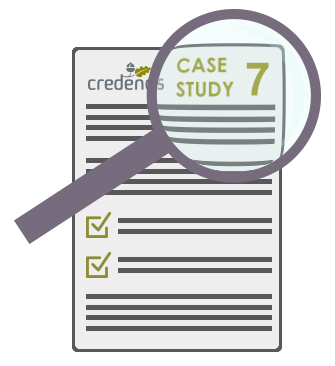Case Study (7)
Helping a business owner gain greater control over his pension

Case Study 7
We help a business owner gain greater control over his pension and expand his company through the purchase of commercial property
A business owner in his 50s approached us for help managing his pension.
With some financial experience, the man felt that he wasn’t getting enough out of his current pension scheme. He wanted greater control but was also aware that some pensions could be used to buy commercial property – the crucial next step in expanding his business.
Thankfully, Credencis was on hand to help.
A SIPP gives more freedom to savers and more options to business owners
With pension funds exceeding £150,000, the desire for a more hands-on approach, and the option to purchase commercial property, a self-invested personal pension (SIPP) was a great choice for our business owner client.
The hands-on approach allowed him to choose from a wider range of investments, like cash and shares, but also unit trusts, open-ended investment companies, and gold.
And he was able to do this with all the usual tax efficiencies of a pension (from tax relief on contributions to tax-free cash at pension age). As with other pensions under current rules, SIPP arrangements also fall outside of the estate for Inheritance Tax (IHT) calculation purposes, making them a tax-efficient way to pass on wealth.
While added flexibility comes with additional fees, the size of the client’s pension fund and the potential for business growth outweighed the extra cost.
The SIPP had benefits that our client’s previous pension scheme didn’t have, like the option to borrow from the fund
Our client wanted the option to borrow money from his own pension to purchase the freehold on a commercial property. He was able to borrow 50% of his SIPP’s value to help.
While our client was considering completing the purchase himself, using just his SIPP, in the event, this wasn’t affordable. He was, though, able to create a simple form of SIPP syndicate with his wife, who also owned a SIPP. The couple also used non-pension funds.
A simplified look at the figures:
Our client was able to buy the freehold on the commercial property with his wife.
A SIPP provided the perfect solution to keep our business owner client’s business and personal financial plans on track
Costs and transfer fees were incurred when transferring our client’s existing pension into a SIPP but we were able to weigh these against the increased flexibility, tax efficiency, and borrowing power of the SIPP. This allowed our client to make an informed choice and achieve the property purchase his plans required.
We were also able to factor his (and his wife’s) personal retirement plans into his plans for business growth, ensuring that both aspects of his and his family’s financial futures remain on track and continue to be aligned with their long-term goals.
Have questions? We can help.
Our client was able to complete a relatively simple syndicated SIPP property purchase but the rules can still be complicated. They become more so when several SIPPs are joined and unequal amounts are involved across the involved parties. The rules here can be complicated so always contact us before making any big retirement decisions.
If you’re considering a move into a SIPP and think you could benefit from help, please get in touch. Email info@credencis.co.uk or call 01158 967 538.
Please note
The value of your investment can go down as well as up and you may not get back the full amount you invested. Past performance is not a reliable indicator of future performance. Your pension income could also be affected by the interest rates at the time you take your benefits. Levels, bases of and reliefs from taxation may be subject to change and their value depends on the individual circumstances of the investor.


